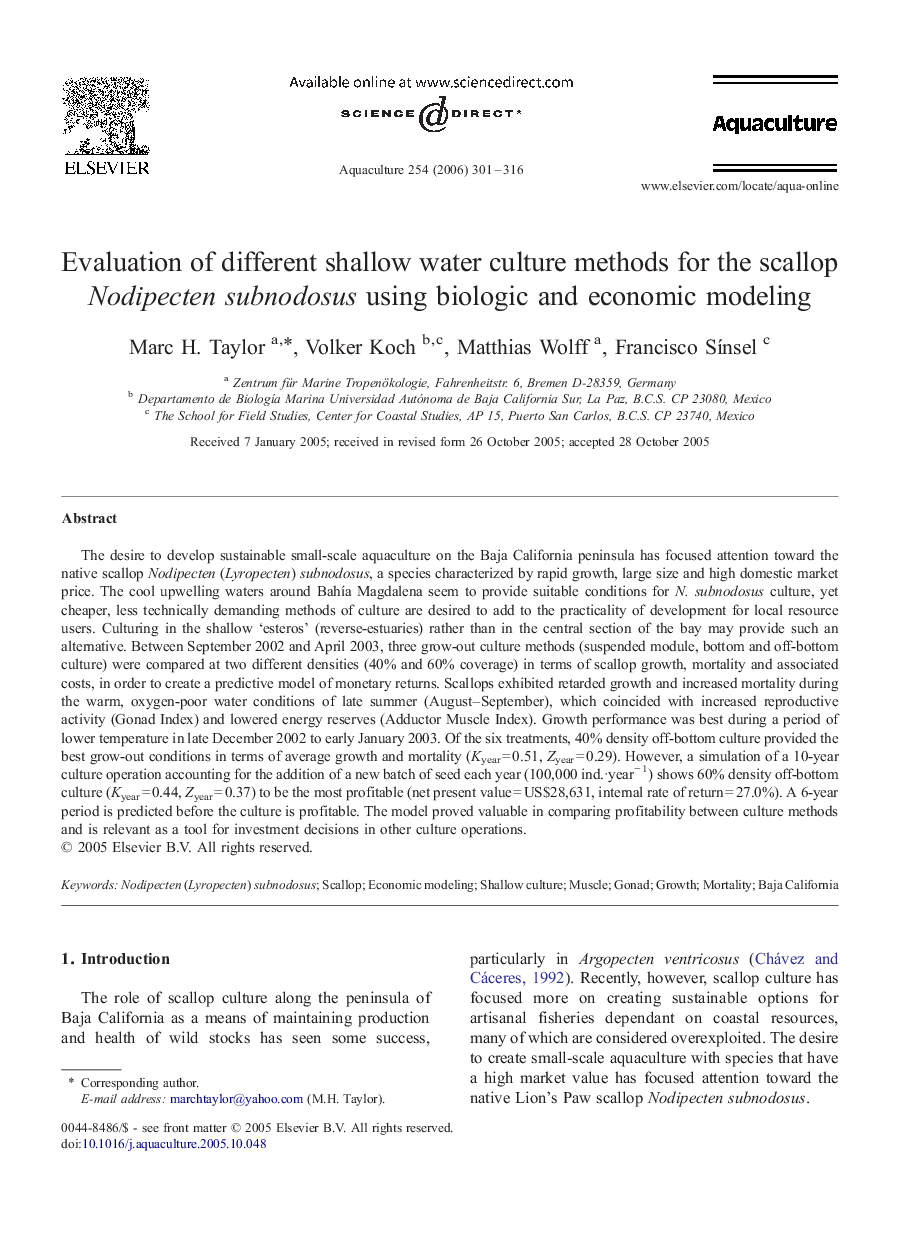| کد مقاله | کد نشریه | سال انتشار | مقاله انگلیسی | نسخه تمام متن |
|---|---|---|---|---|
| 2426002 | 1552987 | 2006 | 16 صفحه PDF | دانلود رایگان |

The desire to develop sustainable small-scale aquaculture on the Baja California peninsula has focused attention toward the native scallop Nodipecten (Lyropecten) subnodosus, a species characterized by rapid growth, large size and high domestic market price. The cool upwelling waters around Bahía Magdalena seem to provide suitable conditions for N. subnodosus culture, yet cheaper, less technically demanding methods of culture are desired to add to the practicality of development for local resource users. Culturing in the shallow ‘esteros’ (reverse-estuaries) rather than in the central section of the bay may provide such an alternative. Between September 2002 and April 2003, three grow-out culture methods (suspended module, bottom and off-bottom culture) were compared at two different densities (40% and 60% coverage) in terms of scallop growth, mortality and associated costs, in order to create a predictive model of monetary returns. Scallops exhibited retarded growth and increased mortality during the warm, oxygen-poor water conditions of late summer (August–September), which coincided with increased reproductive activity (Gonad Index) and lowered energy reserves (Adductor Muscle Index). Growth performance was best during a period of lower temperature in late December 2002 to early January 2003. Of the six treatments, 40% density off-bottom culture provided the best grow-out conditions in terms of average growth and mortality (Kyear = 0.51, Zyear = 0.29). However, a simulation of a 10-year culture operation accounting for the addition of a new batch of seed each year (100,000 ind.·year− 1) shows 60% density off-bottom culture (Kyear = 0.44, Zyear = 0.37) to be the most profitable (net present value = US$28,631, internal rate of return = 27.0%). A 6-year period is predicted before the culture is profitable. The model proved valuable in comparing profitability between culture methods and is relevant as a tool for investment decisions in other culture operations.
Journal: Aquaculture - Volume 254, Issues 1–4, 28 April 2006, Pages 301–316